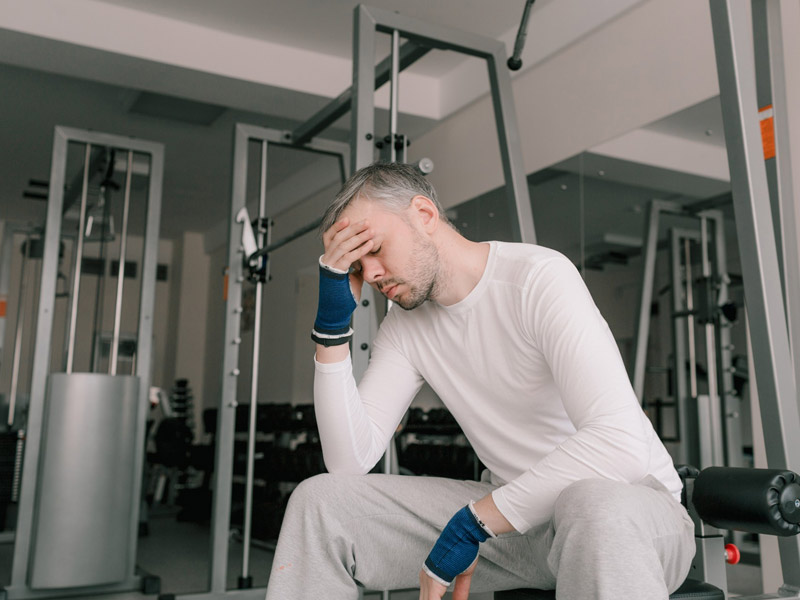

CEPHALEIA – Headache after exercise: How to avoid it
Do you ever get headaches right after a workout? Did you know that this type of problem has several reasons and causes that can be remedied? In this content we will address several aspects about Post Exercise Headache, click here and check it out
Pain in general is very common in the life of anyone who trains, usually muscular, they can indicate from a positive result (in cases of hypertrophy training) or still be signs that things are not very well.
However, one of the most annoying pains in the lives of athletes are headaches, temple and forehead pains, which can have many different causes and reasons.
Although some people are genetically more susceptible to migraines or even suffer from chronic migraines, this problem can be remedied, alleviated, and even contained with a few habits.
In this content, we will talk about this, the post-training headache, a problem that affects thousands of professional, amateur, and beginning athletes.
Are you interested in the subject? Continue with this content and check out all the information on the subject.
What is headache?
Headache is the official medical term for the famous headache, and this problem has two types: primary and secondary.
Primary headache:
Commonly triggered by intense exertion, sleepless nights, and even muscle tension and inflammation, primary headache is the most common reason for headaches, and usually manifests itself on the forehead, back of the head, and top of the head.
In addition, the duration of primary headache varies from case to case, but as a rule, it does not prevent you from doing your daily activities.
As for the duration of the primary headache, it usually ranges from 10 minutes to 48 hours, and in the most intense cases, it can lead to more acute symptoms, such as vomiting and vision disorders.
Secondary Headache:
Secondary headaches, on the other hand, usually present symptoms of somewhat more serious problems, and may be the result of hypertension, infections, strokes, and even chemical withdrawal.
Because of this, the follow-up with a specialist is extremely important right from the first symptom of migraines; after all, it is fundamental to understand the origin of your pain.
When should I seek medical help?
As just mentioned, it is important to seek medical attention whenever possible, however, the main signs of a secondary headache are headaches that last several days, even being present for most of the month.
In the next topic, we will address the main causes for headaches that occur during or immediately after running and physical strength training. Follow along:
What are the causes for headaches during or after training and how to avoid them.
Let’s see what the main causes of headaches are and how to remedy them?
Headache caused by exercise
Commonly caused by excessive physical exercise in cases of very intense workouts, and also by lack of adequate warm-up, exercise headaches can be avoided simply by reducing the intensity and load of the activities and workouts, as well as by adopting proper warm-ups before and after training.
In this case, invest in progressive warm-ups, with exercise loads that start lighter until peak effort is reached and slowly reducing until you return to the inertia stage.
Headache caused by postural problems
Although many people don’t know it, headaches can also be caused by bad posture during the day or while exercising. After all, incorrect posture can result in inflammation and muscle tension, which in turn bring on the unwanted migraines.
To avoid this problem, count on the help of a professional, who can analyze your habitual posture and from there, help you create habits to correct it.
To treat headaches arising from existing postural problems, neck massages and muscle relaxants can be of great help.
Headache caused by dehydration
As the main reason for workout-related headaches, dehydration headaches can occur either from excessive sweating during physical activities or simply, from lack of fluid intake.
So, always drink at least 35ml of water per kg of body weight throughout the day, this “formula” can help you stay hydrated and away from pain and other complications.
Conclusion
Although they are quite uncomfortable and in some cases persistent, training-related headaches can be avoided and reduced most of the time.
Remember to always keep your blood tests and medical follow-ups up to date, and during your fitness process, count on the support of Sooro Renner, nutrition that generates results.